It’s easy to assume that we should fertilize strawberry plants in the spring. After all, this is the prime time of year for fertilizing gardens and most other production plants.
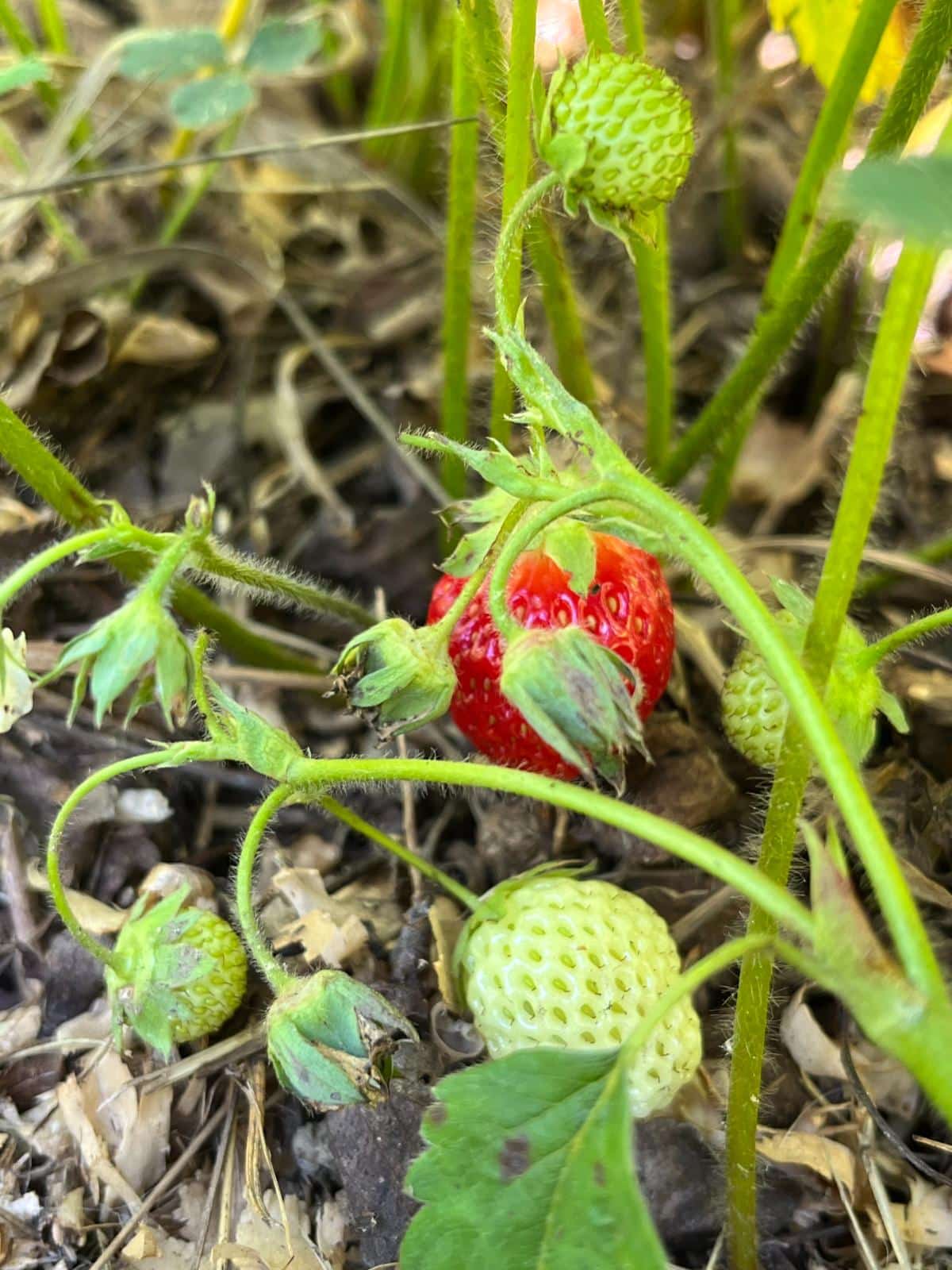
However, this is not the right time of year to fertilize strawberries. And there are some very important reasons why you don’t want to do it.
Jump to:
- Why Not Fertilize Strawberries in the Spring?
- When Should You Fertilize June Bearing Strawberries
- Some exceptions to the rule
- What About Fertilizing Everbearing and Day Neutral Strawberries?
- What Fertilizer Should I Use?
- Don’t Fertilize Strawberries After the End of August (June Bearing, Day Neutral, or Everbearing)
- Strawberry Fertilization Made Simple
Why Not Fertilize Strawberries in the Spring?
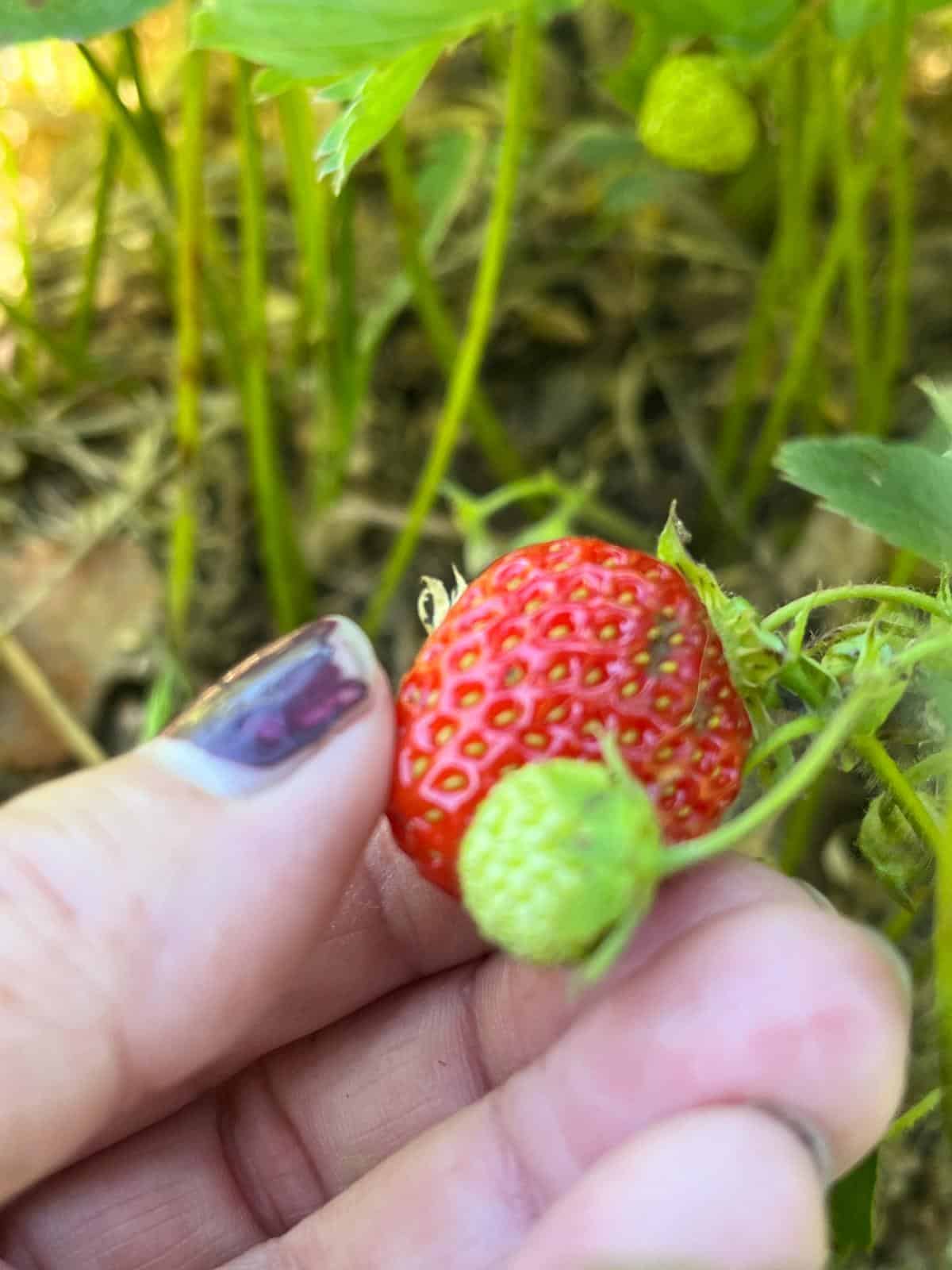
Spring is a time of growth for strawberries. The nutrients that they should be using now should be nutrients and fertilizers that were in place in the previous year. (We are talking, of course, about established beds – new strawberry beds should be fertilized and amended according to their needs before the plants are planted.)
These guidelines are primarily for June-bearing strawberries. There is a slight difference for day-neutral and everbearing varieties (though spring fertilization is not the best timing for them, either – see below).
The major reason why strawberries should not be fertilized in the spring, in short, is that it affects the fruit’s quality. When you fertilize strawberries in the spring, the berries become soft and mushy. Not only is this less desirable in your fruit, but it can lead to rot and disease issues.
The major culprit in spring fertilizer is nitrogen. Nitrogen encourages fast and strong plant and foliage growth. It reduces blossoming and fruit production and reduces the firmness of the berries.
When you fertilize strawberries in the spring, the following problems often arise:
- There is an overgrowth of leaves and stems
- Strawberries become soft
- Berries may have spots of rot resulting from softness
- Softer fruit is prone to rot
- Brown spots and rotten berries become more prevalent
- Air circulation is decreased
- Plants are more vulnerable to diseases of the plant and foliage, such as fungal diseases and viruses
- Fruit yields are significantly reduced
- Overgrowth of foliage makes harvesting difficult
When Should You Fertilize June Bearing Strawberries
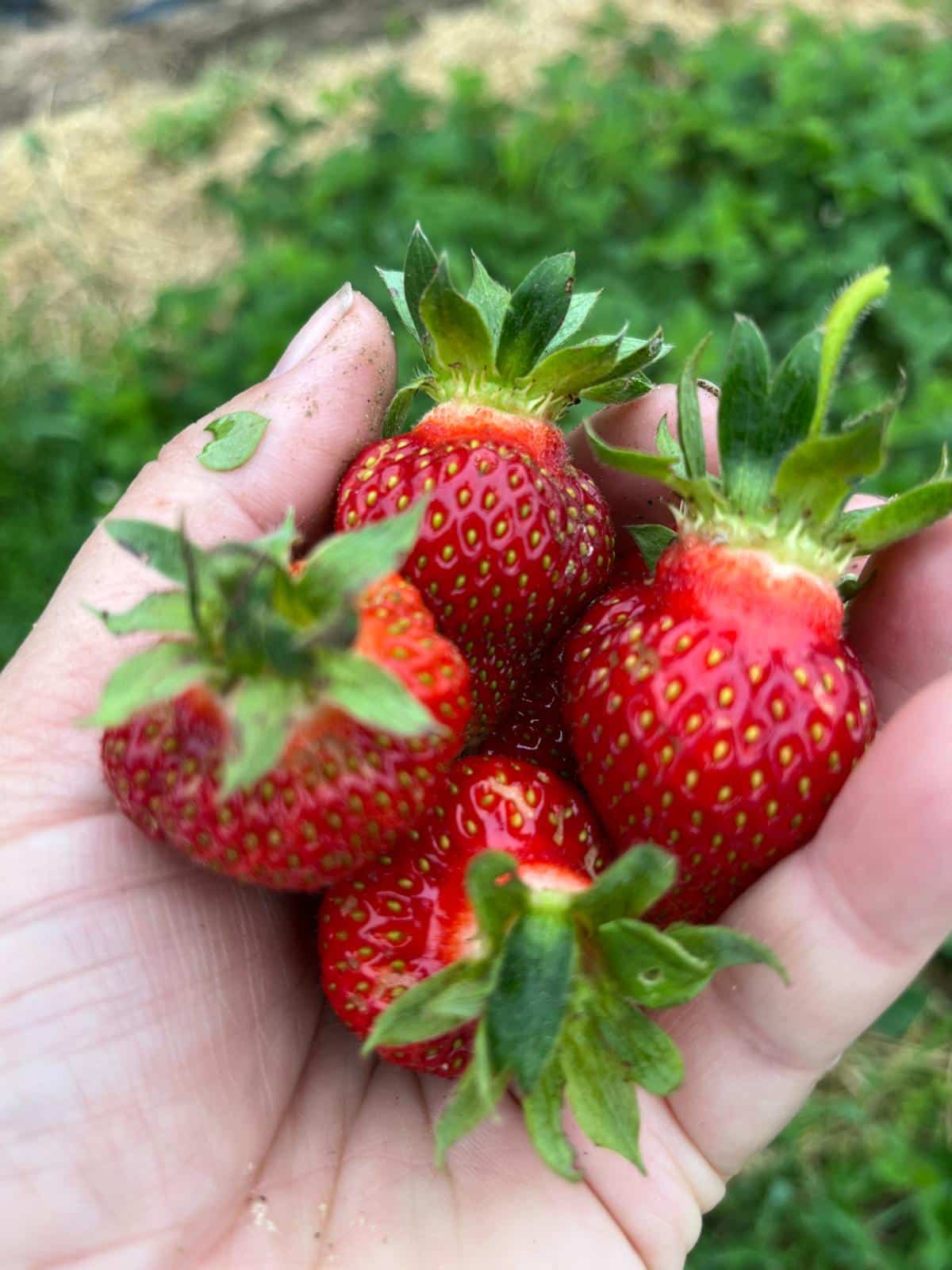
The right time to fertilize June-bearing strawberries is after the final harvest of the year. It is at this time that the strawberries need to recoup and start growing and setting up for next year’s production (remember that by fall, June-bearing plants will be setting their buds for the following year).
At this time of year, that nitrogen is a good thing.
Fertilizing for June-bearing strawberries is typically done in late June or July. A second application is often applied in August after or as part of the renovation process.
Some exceptions to the rule
There are a few circumstances in which you might want to fertilize strawberries in the spring.
When the health of your plants overrides the quality and yield of strawberries, you may choose to fertilize in the spring, even for June-bearing plants. Keep in mind that this would only be if the survival of the patch is at stake.
If the plants are suffering and struggling, you should give them a boost with spring fertilizer. This will be noted by yellow or lime-green, pale leaves. However, you should still limit the nitrogen in the fertilizer (which is what is responsible for excess growth of foliage and fruit softness).
If you must fertilize to save your plants in the spring, use a low nitrogen (N) 5-10-10 all-purpose fertilizer or straight bloodmeal.
Potassium (K) and phosphorous (P) are important for strawberries. In the best-case scenario, these are applied before the bed is planted. If conditions or a soil test indicate a need for P or K, it is safe to apply these nutrients in the spring without negatively affecting fruit quality or production.
What About Fertilizing Everbearing and Day Neutral Strawberries?
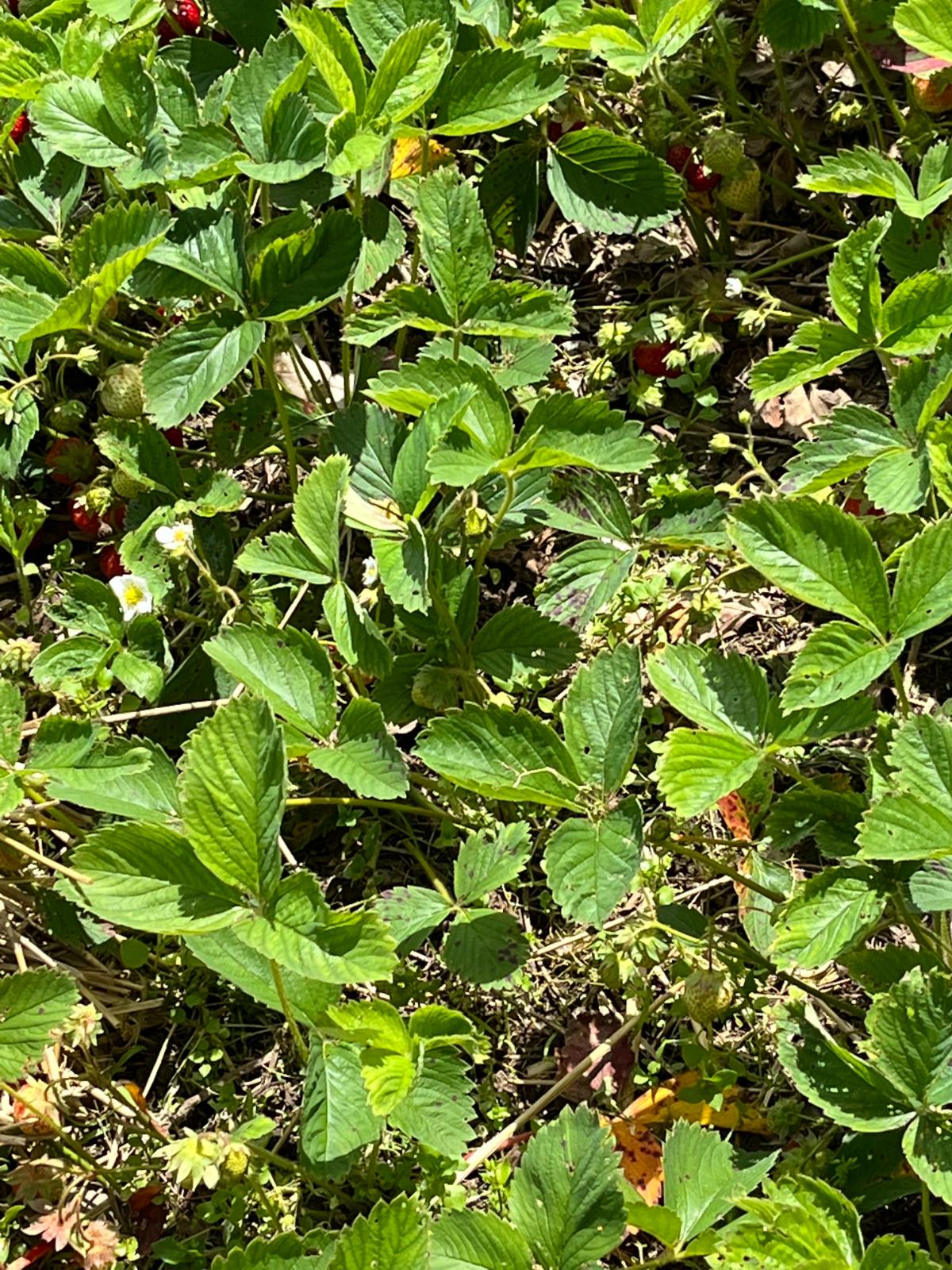
Everbearing and day-neutral strawberries are treated a little differently. These continuously produce for most of the summer. Most will produce a large flush of fruit in June, then rest with little to no production for a few weeks, then produce again and continue with an ongoing supply of strawberries through the fall (sometimes until a hard freeze – even in zones as cold as zone 5 you might harvest strawberries straight through fall in a warm year!).
And so, you can’t just wait until after they flush their harvest and then fertilize. You’ll need to feed them while there are still berries to be produced.
It’s best to wait until after your everbearing or day-neutral strawberries have slowed down from their big June production and then fertilize them. A few applications are recommended.
A good fertilization schedule for everbearing strawberries is:
- Mid-June, after the first large flush
- Mid-July
- Late August
What Fertilizer Should I Use?
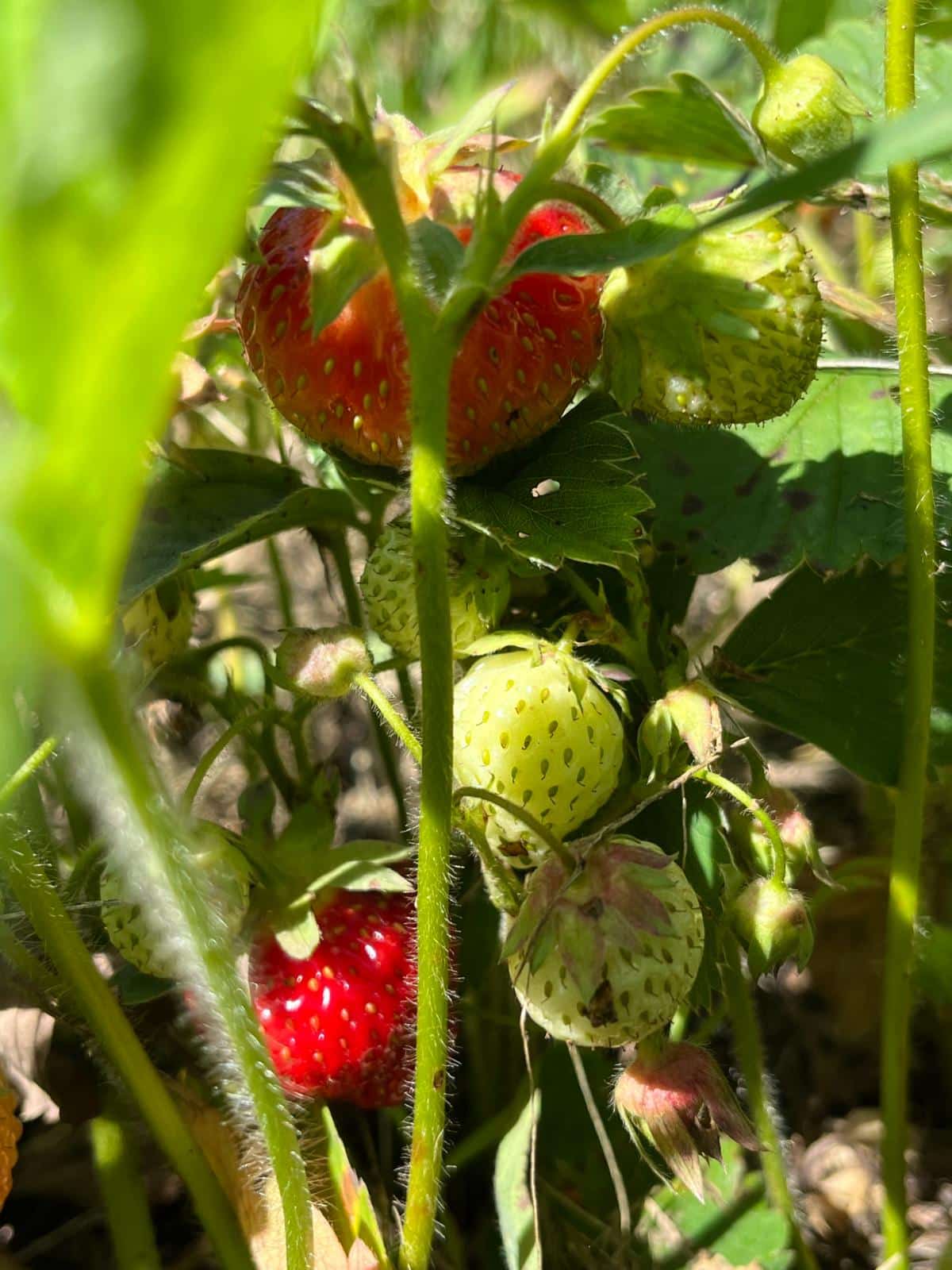
For established strawberry beds, use a balanced all-purpose fertilizer or a natural fertilizer like compost or composted manure.
If using an all-purpose fertilizer, use a 10-10-10 fertilizer at a rate of five pounds for every 100 feet of row.
If you are using liquid fertilizers, you can use them in a hose or irrigation system.
If you have tested your plants or soil and the test shows a different or more specific need, adjust your fertilizing plan accordingly. In that case, you would use what is recommended specifically given your soil and plants’ needs.
Don’t Fertilize Strawberries After the End of August (June Bearing, Day Neutral, or Everbearing)
Fertilizer, especially nitrogen fertilizer, promotes plant growth. There are times of year when this is good and times when it is not good. For strawberries, it is not good if the new plant growth goes on too long late in the season.
For this reason, you should not apply any fertilizer to your strawberries after August 31st. This is true for June-bearing, everbearing, and day-neutral types of strawberries.
Fertilizing after August promotes too much new foliar growth and stops the plants from hardening off before winter. This puts your strawberry plants at risk over the winter and increases the chance that they will be killed in the cold weather.
Strawberry Fertilization Made Simple
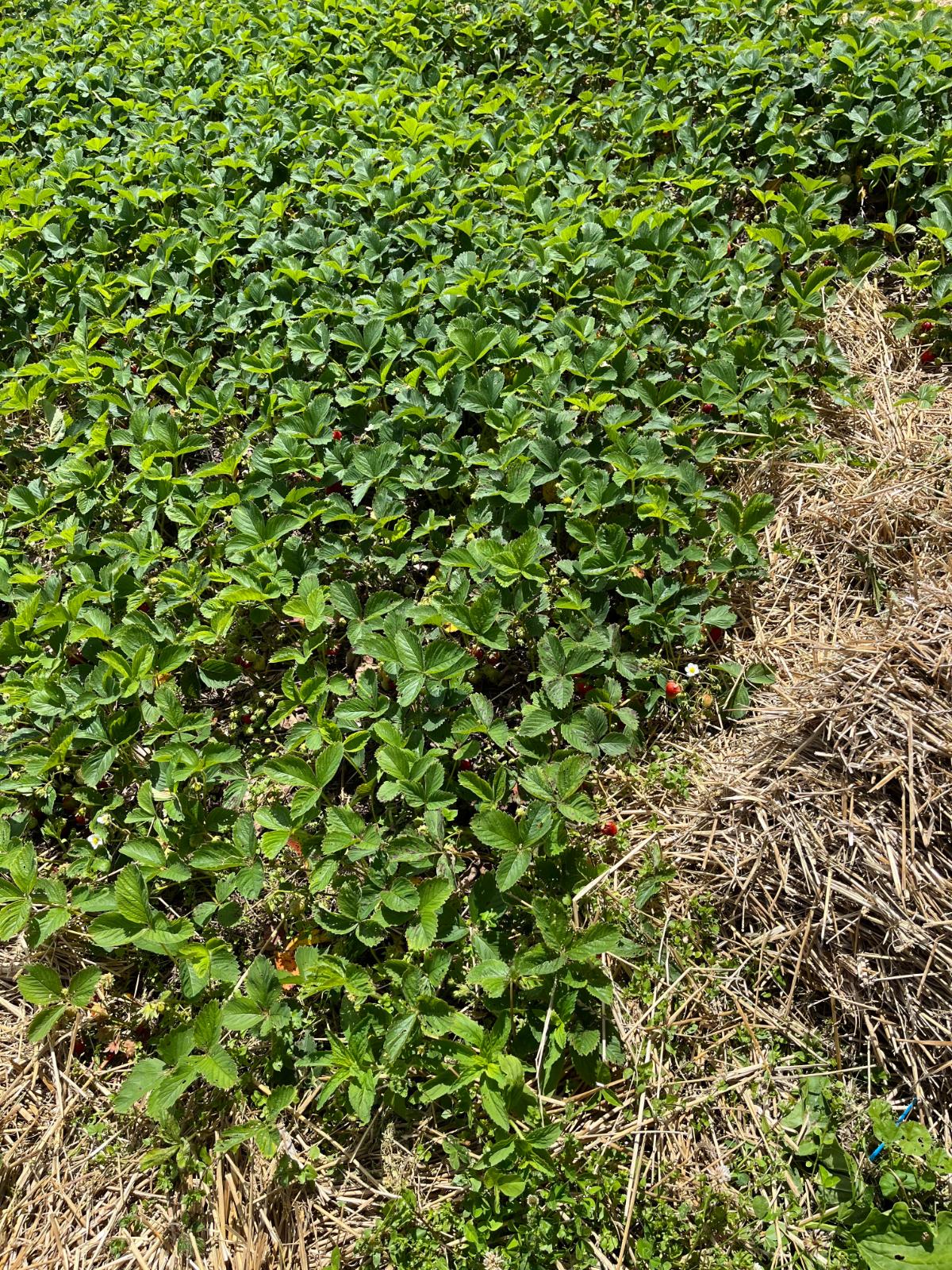
When it comes down to it, fertilizing strawberry beds isn’t hard or complicated – you just need to know when the right time to do it is. And, somewhat counterintuitively, that is not in the spring.
Which isn’t bad news – it’s one more task that can wait until after the craziness of spring planting and fertilizing (of other plants!) is done.









Valerie says
Hi!
I have an entire 6×4 foot bed of strawberry plants that almost exclusively makes runners. We got like 10 fruits all year. I’m too late to fertilize it sounds like…but I’d really like to have a more successful crop next year. Should I pull these plants out (they have been there 2 years with the same issue)? And start over? Can I add some fertilizer between now and next spring to see if it helps? Any other advice? Thank you!
Mary Ward says
Yes, you can fertilize now and it will be there for the early spring. Don’t fertilize late in the spring, near blossom or fruiting time, as the fruit can become soft. It sounds like your issue might be plentiful fertilizer, so I might fertilize now (fall/winter) but then not again until after harvest next season, when you renovate.
Personally, I would cut off all the runners and if needed, thin plants. See how next season goes and then, replace if the problem persists (3 years is about as long as a patch will produce anyway).
I’m sure you’re sick of not getting berries, so I might even put some additional plants in the bed now, or in the early spring. Consider a day neutral or everbearing variety that will give you some berries next summer through fall.
Terry Stewart says
can you help me out with sime advice? i live in zone 2 and wish to grow strawberries in pots indoors over the winter. i am using 6 inch diameter with depth of 8 inches for pots. i am growing 3 different as a test all day neutral….seascape, albion and monteray. total of 90 pots. i wish to use granular fertilizer 16-16-16 slow release nitrogen. my question is how much do i add (teaspoon/tablespoon) in a pot and how often. thanking you in advance
Mary Ward says
Let me do a little digging and thinking about this. I would think to follow a similar schedule and amount as outdoor feeding for day neutrals, but the timing would have to be modified.
Have you potted/started the plants yet? When are you planning to start and when would you expect your first flush of berries to be?